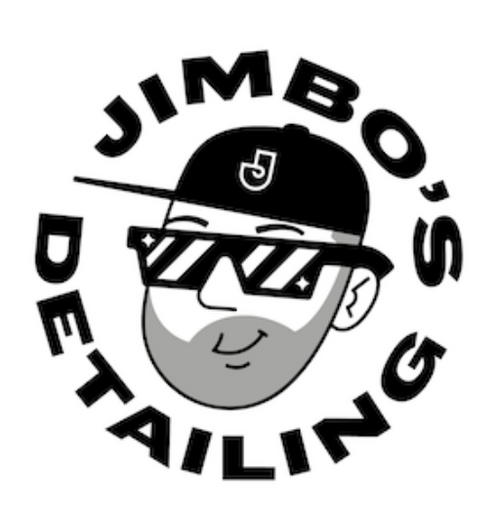The 3 Levels of Paint Correction Explained
Not every car needs a full multi-step paint correction. Sometimes, a simple polish is all it takes to make your paint look incredible. In this post, we’ll break down the three levels of paint correction — enhancement, one-step, and multi-step — and explain when to use each one for the best results. We’ll also show how Picture Perfect Polish fits into each level perfectly.
Estimated Reading Time: ~9 minutes
What Is Paint Correction?
Paint correction is the process of removing imperfections like swirl marks, oxidation, and scratches from your vehicle’s paint surface to restore gloss and clarity. It involves using abrasives, pads, and polishers to level the clear coat — safely refining the surface to a perfect shine.
But not all corrections are equal. Depending on your paint’s condition, budget, and time, you can choose from three main levels of correction.
Level 1: Paint Enhancement
Goal: Boost gloss and depth without chasing full defect removal.
This is the entry-level stage — perfect for newer cars or vehicles with minimal swirls. It’s fast, affordable, and gives noticeable improvement without the intensity of full correction work.
- → Uses a finishing or light polishing pad
- → Focuses on gloss improvement, not full defect removal
- → Usually removes 30–50% of visible swirls
- → Great for pre-sale prep or maintenance detailing
Recommended Product: Picture Perfect Polish — gentle enough to enhance gloss on soft paints while leaving a clean, coating-ready finish.
Level 2: One-Step Correction
Goal: Balance correction and refinement in one polishing stage.
One-step correction is the most popular choice for enthusiasts and professionals alike. It removes moderate defects while leaving a smooth, high-gloss finish. This is where modern hybrid polishes like Picture Perfect Polish shine.
| Correction Power | Time Required | Finish Quality |
|---|---|---|
| 60–80% defect removal | Medium (3–5 hours) | Excellent gloss and clarity |
- → Ideal for daily drivers and weekend cars
- → Adjust results with pad choice — cutting or polishing
- → Safe for all paint types (hard or soft)
Pro Tip: Pair Picture Perfect Polish with a medium foam pad for cutting, then a softer pad for finishing if desired — no need to change products.
Polish Smarter, Not Harder
Picture Perfect Polish delivers pro-level correction and a flawless finish in one step — perfect for Level 1 or Level 2 corrections.
Shop Picture Perfect Polish Buy on AmazonLevel 3: Multi-Step Correction
Goal: Achieve the highest possible clarity and defect removal — showroom or concours-level results.
This is the most advanced form of paint correction, usually reserved for high-end vehicles or full restorations. It involves multiple stages: heavy compounding for deep defects, followed by polishing and refinement passes for maximum gloss.
- → Removes up to 95%+ of paint defects
- → Involves multiple pad and polish combinations
- → Can take 8–15 hours or more to complete
- → Requires precision lighting and experience
After finishing, it’s critical to apply protection immediately using a ceramic coating like The Gloss Boss or spray protection such as Tough As Shell.
Seal in Your Results
After your correction, lock in the gloss with Tough As Shell or go for long-term protection with The Gloss Boss ceramic coating.
Shop Tough As Shell Buy on AmazonWhich Level Is Right for You?
Choosing the right correction level depends on your paint’s condition, goals, and available time:
| Condition | Recommended Level | Why |
|---|---|---|
| Light swirls or dullness | Level 1: Enhancement | Quick gloss improvement |
| Moderate defects, daily driver | Level 2: One-Step | Balanced cut and finish |
| Severe defects or show car | Level 3: Multi-Step | Maximum correction and gloss |
Pro Tips for Choosing Your Correction Level
- → Always start with a test spot to evaluate paint behavior.
- → Don’t chase perfection if the clear coat is thin or aged.
- → Use lighting to inspect your progress between stages.
- → Protect your work immediately to prevent re-oxidation or marring.
- → Remember — sometimes “good enough” is the safest and smartest choice.
Related Reading
- Understanding Paint Hardness and How It Affects Polishing
- The Perfect One-Step Polish: Cut and Finish in One
- How to Protect Polished Paint for Maximum Longevity
- How to Eliminate Micro-Marring for a Perfect Finish
- Paint Correction for Beginners – Safely Fix Swirls & Scratches
FAQs
How do I know which level of correction my car needs?
Inspect your paint under good lighting. If it just looks dull, go with enhancement. If there are visible swirls, one-step. Deep scratches? Multi-step.
Can I jump straight to Level 3 correction?
Not recommended unless you have experience and the right tools. Always start mild and increase as needed.
What polish works for all three levels?
Picture Perfect Polish — it’s pad-dependent, meaning you can control its aggressiveness by changing pads.
Do I need to coat the paint after every correction?
Yes. Correction exposes fresh paint that needs protection. Use Tough As Shell or The Gloss Boss to lock in your results.
Can I perform Level 2 correction by hand?
You can improve gloss by hand, but machine polishing will always produce deeper correction and consistency.



